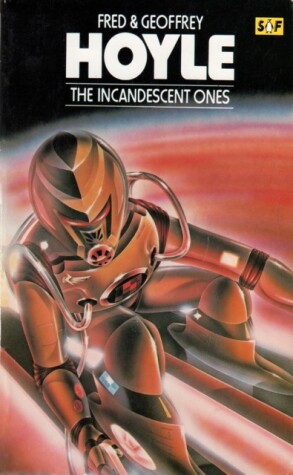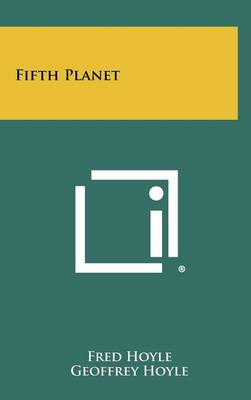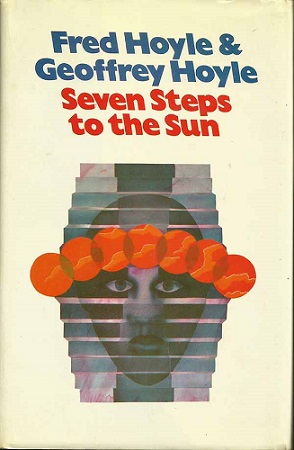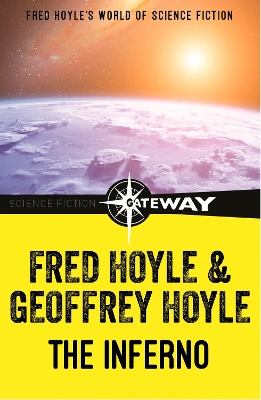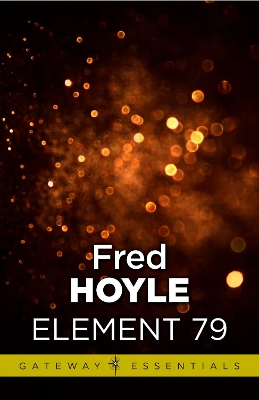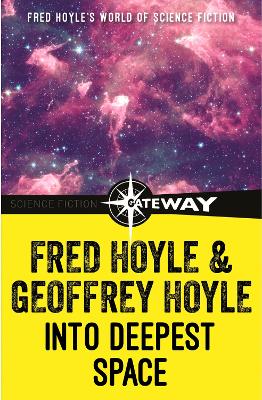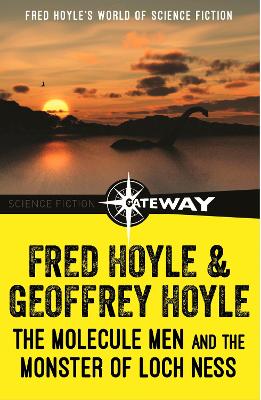Fred Hoyle's World of Science Fiction
9 total works
The year is 2087. The two great power blocs still face each other, with Britain having adopted the political role formerly occupied by Switzerland.
For 75 years the world has known of the approach of another solar system which will pass between our sun and its outermost planets. The sun of the other solar system is named Helios by astronomers, and it too is found to have planets. Its fifth planet, Achilles, is the one most similar to Earth; and rival rocket ship expeditions are launched by the Euro-American and Communist blocs to explore this transient neighbour...
From here on the story is weird and wonderful, the action lively; the scientific ideas are intriguing and the social satire is amusing.
The Westminster Disaster is based on the present world shortage of high-grade uranium and the action turns on a Soviet threat to use nuclear blackmail against London.
When the British Ambassador to the U.N. seeks to veto a Soviet demand for sanctions against South Africa, the threat becomes a hideous reality.
Writing from a position of intimate knowledge of advanced trends in research and science administration, in this novel the Hoyles give vivid expression to their deep fears about the present world situation and about carefully laid plans for Soviet domination...
Mike Jerome, a likeable young TV writer, visits Professor Smitt, a physicist, who gives him an idea for a TV script: using some source of light, perhaps a laser beam, one could reduce the human structure to a form that could be transmitted into the future as electrical pulses - and thus create time travel.
On the way home Mike is hit by a taxi, and when he recovers he finds the date is 1979 - ten years in the future. This is but the beginning of a series of bewildering, fascinating ten year jumps. Mike is himself living the time change himself! At the end of each stop he tries to find his best friend, Pete Jones, a Negro jazz musician. Jumps to 1989, 1999 and so on, take Mike into such far-reaching places as London, the Northern Territory of Australia, California and the Italian Alps, for a rousing series of adventures in all sorts of bizarre circumstances. At the very end of this outstanding science fiction adventure by a noted father-son team, there is a slyly ambiguous twist which leaves the reader wondering...
Cameron, a tall, testy, whisky-drinking, nationalist-minded, Scottish physicist, may not have been an astronomer, but he knew the off things in the sky when he saw them. From an Australian mountaintop where he was advising on the location of a radiotelescope he saw what looked like Mars, in the wrong spot in the sky. But it wasn't Mars at all, it was a supernova ... no, not a supernova but a quasar.
Knowing what would happen, Cameron dashed home to Scotland and found himself at a crossroads of his life. In the face of total catastrophe, and of intense heat, darkness and rain, he took over as natural leader with both the north and south of the United Kingdom turning to him for help.
Sir Fred Hoyle, world-renowned astrophysicist, and his son, Geoffrey Hoyle, have set their newest science fiction thriller not only in London and Scotland, but also at the University of Charlottesville, and in Australia as well.
The result is an intriguing, fast-paced novel written with a wry humour and offering some fascinating glimpses of and gibes at astronomy.
Originally written as a play and performed at the Mermaid Theatre, Easter 1962.
It is the early 20th century. Man is seeking signs of life elsewhere in the universe, but all exploratory ships have been lost without a trace - except for DSP15. Thirty years after leaving earth, and given up for lost, DSP15 suddenly appears on radar screens at the space station at Mildenhall, England. Her crew had been frozen to prevent ageing, and as the ship settles to a landing, Dr Richard Warboys eagerly awaits with other scientists for word of what DSP15 has found. But there is no crew, only a message scratched into a metal surface, signed by the captain: "If this ship returns to Earth, then mankind is in deadly peril - God help you - " And so Earth becomes accidentally involved in a cosmic battle against a virtually omnipotent alien power, in a story suspenseful and exciting from cover to cover.
Can immortal man ever outwit the airlines? What if dumb animals could be trained to 'appreciate' the communications media of the human world? How does Number 38, Zone 11, respond when he sees a U.F.O? What happens to Slippage City when the Devil decides to think big?
These - plus a remarkable sex comedy - are some of the intriguing themes of Element 79, the new Hoyle galaxy that ranges the full scientific spectrum and beyond into the furthest reaches of the imagination. Author Fred Hoyle is an internationally renowned astronomer and much of his fiction is rooted in the realm of what is possible - scientifically and psychologically - on earth and in space, in the present and the future. His visions of his fellow humans is disquieting, hilarious, and sometimes frightening; his social commentary is often etched in acid. In Element 79 Mr Hoyle steps forward to take a backward glance at the world - deftly balancing his followers between the unreal and the real, between a chuckle and a shudder.
Sequel to Rockets in Ursa Major
From a great distance the Yela's recorded message crackled through on the micro-earpiece: 'For the time being you have won. But I am not defeated so easily.'
That had been three years ago, after Dick Warboys had repulsed the invading Yela by firing a lithium bomb into the Sun. But now that threat seems near fulfilment as appalled scientists detect the rapid approach of a vast, engulfing cloud of hydrogen. Can humanity survive on Earth or must selected pioneers abandon it in search of a safer region of the Galaxy?
To find the answer Dick and his allies from Space suffer a perilous voyage into the realms that reach the ultimate in understanding the physical universe.
The Molecule Men and the Monster of Loch Ness
by Fred Hoyle and Geoffrey Hoyle
Dr John West, Cambridge don and private investigator, was present at the trial of an odd duck, R. A. Adcock, who was being most uncooperative in answering questions about a bank robbery. At length, Adcock had made a dash for it from the courtroom - through a glass window, and what should have been a three storey drop to the street. But suddenly, Adcock wasn't there, and at once a swarm of bees came into the courtroom.
Thus begins The Molecule Men, which takes many fascinating and terrifying turns to its chilling conclusion.
In the second story, the Monster of Loch Ness, Tom Cochrane, an independent scientist, determines to find out why the waters of Loch Ness are inexplicably warming up. What was it that caused the waters of the loch to pour up into the air like the worst rainstorm any of the observers had ever seen? What was at the bottom of the loch?
These two short novels by a celebrated father and son team will hold the interest of the science fiction fan from page one on.
